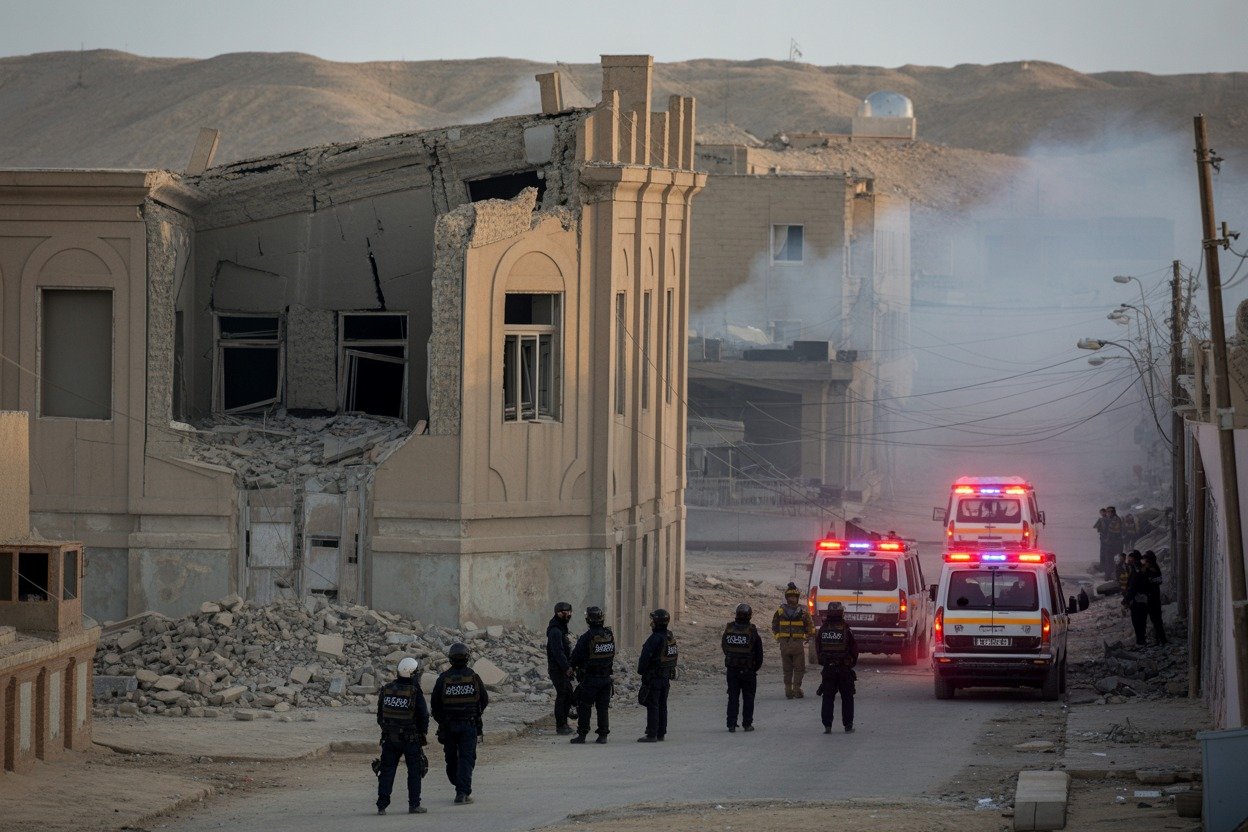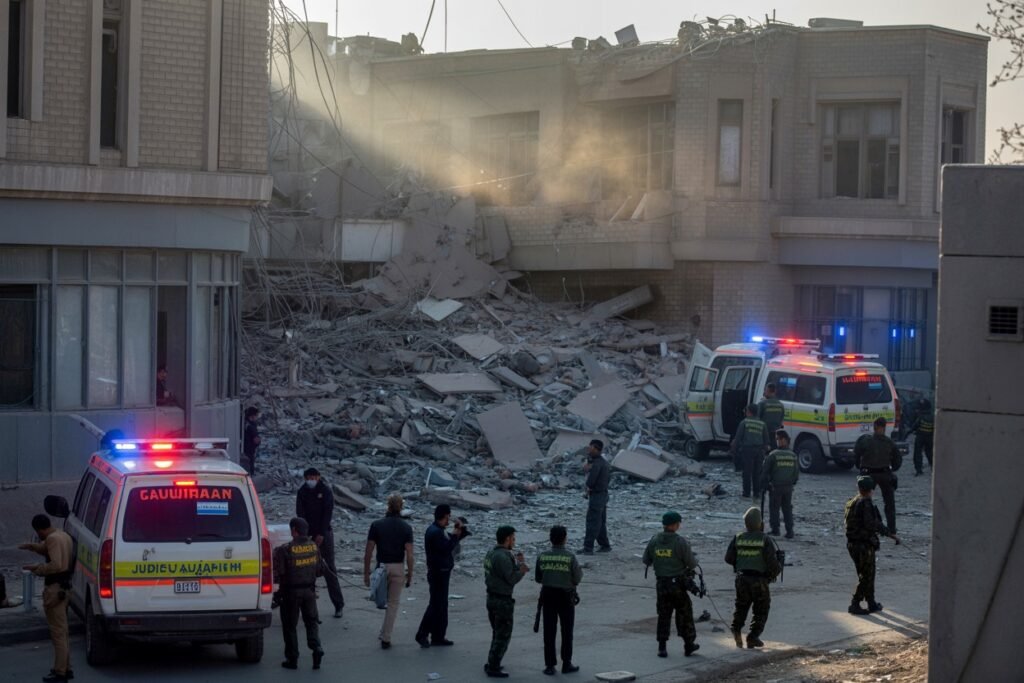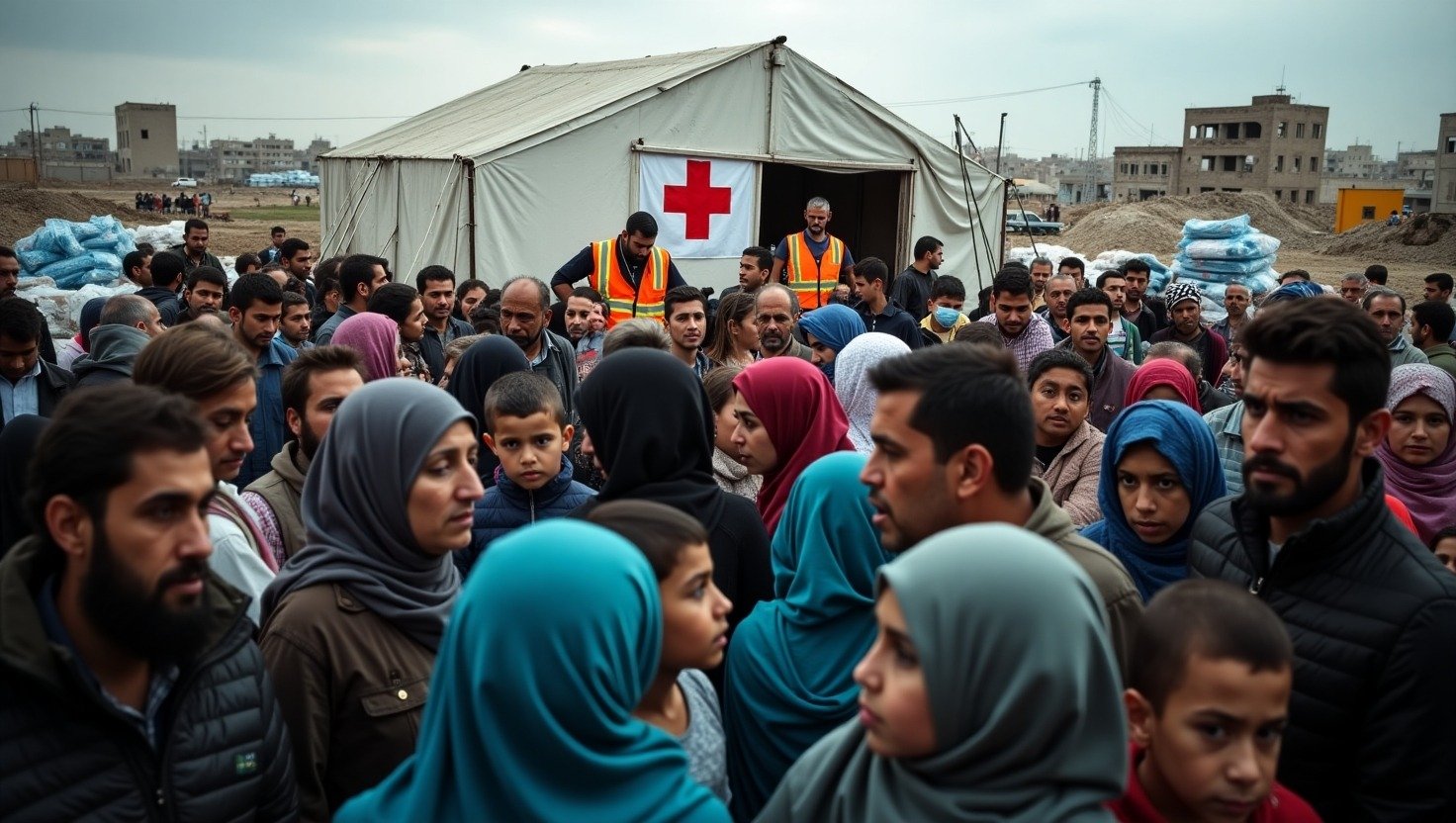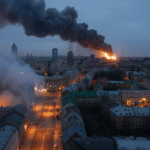- Home
- ScienceDiscover the latest updates from across the United States, including politics, culture, economy, and trending stories. Stay informed on the key events shaping the nation and the topics everyone’s talking about.
- EconomyOur Economy page provides comprehensive reporting on international financial systems, trade dynamics, development economics, and macroeconomic policy. Drawing on expert analysis and institutional data, we illuminate the interconnected nature of global markets and their real-world implications for governance and inequality.
- HealthWe examine global health issues through the lens of policy, access, equity, and innovation. From pandemics and healthcare infrastructure to mental health and biotechnological breakthroughs, our health reporting is rooted in empirical data, expert insight, and a commitment to understanding health as a cornerstone of human development.
- HistoryThis section revisits critical junctures in world history, emphasizing the relevance of historical events in shaping present-day global affairs. Through scholarly narratives and fact-anchored storytelling, we uncover the often-overlooked patterns, power structures, and human decisions that have left a lasting imprint on international relations and societies.
- PoliticsOur Politics section offers in-depth analysis of international political developments, ideological movements, and institutional shifts. With a focus on global governance, diplomacy, and geopolitical strategy, we provide nuanced reporting that transcends partisan narratives and situates events within their broader historical and structural contexts.
- War & ConflictThis section delivers meticulous coverage of international conflicts, civil wars, military strategies, and peace negotiations. We prioritize geopolitical context, long-term impact, and the role of state and non-state actors—eschewing sensationalism in favor of sober, historically informed analysis.
- TechnologyWe critically examine the global technology landscape—from artificial intelligence and cybersecurity to digital policy and ethical innovation. Our reporting focuses not just on what is being built, but why it matters: how technological change influences governance, economy, security, and human life on a planetary scale.
- Features
- Home
- ScienceDiscover the latest updates from across the United States, including politics, culture, economy, and trending stories. Stay informed on the key events shaping the nation and the topics everyone’s talking about.
- EconomyOur Economy page provides comprehensive reporting on international financial systems, trade dynamics, development economics, and macroeconomic policy. Drawing on expert analysis and institutional data, we illuminate the interconnected nature of global markets and their real-world implications for governance and inequality.
- HealthWe examine global health issues through the lens of policy, access, equity, and innovation. From pandemics and healthcare infrastructure to mental health and biotechnological breakthroughs, our health reporting is rooted in empirical data, expert insight, and a commitment to understanding health as a cornerstone of human development.
- HistoryThis section revisits critical junctures in world history, emphasizing the relevance of historical events in shaping present-day global affairs. Through scholarly narratives and fact-anchored storytelling, we uncover the often-overlooked patterns, power structures, and human decisions that have left a lasting imprint on international relations and societies.
- PoliticsOur Politics section offers in-depth analysis of international political developments, ideological movements, and institutional shifts. With a focus on global governance, diplomacy, and geopolitical strategy, we provide nuanced reporting that transcends partisan narratives and situates events within their broader historical and structural contexts.
- War & ConflictThis section delivers meticulous coverage of international conflicts, civil wars, military strategies, and peace negotiations. We prioritize geopolitical context, long-term impact, and the role of state and non-state actors—eschewing sensationalism in favor of sober, historically informed analysis.
- TechnologyWe critically examine the global technology landscape—from artificial intelligence and cybersecurity to digital policy and ethical innovation. Our reporting focuses not just on what is being built, but why it matters: how technological change influences governance, economy, security, and human life on a planetary scale.
- Features
Now Reading: Zahedan Attack Kills 5 – What Iran Says
-
01
Zahedan Attack Kills 5 – What Iran Says
- Home//
- Science//Discover the latest updates from across the United States, including politics, culture, economy, and trending stories. Stay informed on the key events shaping the nation and the topics everyone’s talking about.
- Economy//Our Economy page provides comprehensive reporting on international financial systems, trade dynamics, development economics, and macroeconomic policy. Drawing on expert analysis and institutional data, we illuminate the interconnected nature of global markets and their real-world implications for governance and inequality.
- Health//We examine global health issues through the lens of policy, access, equity, and innovation. From pandemics and healthcare infrastructure to mental health and biotechnological breakthroughs, our health reporting is rooted in empirical data, expert insight, and a commitment to understanding health as a cornerstone of human development.
- History//This section revisits critical junctures in world history, emphasizing the relevance of historical events in shaping present-day global affairs. Through scholarly narratives and fact-anchored storytelling, we uncover the often-overlooked patterns, power structures, and human decisions that have left a lasting imprint on international relations and societies.
- Politics//Our Politics section offers in-depth analysis of international political developments, ideological movements, and institutional shifts. With a focus on global governance, diplomacy, and geopolitical strategy, we provide nuanced reporting that transcends partisan narratives and situates events within their broader historical and structural contexts.
- War & Conflict//This section delivers meticulous coverage of international conflicts, civil wars, military strategies, and peace negotiations. We prioritize geopolitical context, long-term impact, and the role of state and non-state actors—eschewing sensationalism in favor of sober, historically informed analysis.
- Technology//We critically examine the global technology landscape—from artificial intelligence and cybersecurity to digital policy and ethical innovation. Our reporting focuses not just on what is being built, but why it matters: how technological change influences governance, economy, security, and human life on a planetary scale.
- Features//
- Home
- War & Conflict
- Zahedan Attack Kills 5 – What Iran Says
Zahedan Attack Kills 5 – What Iran Says
Jhon SmithWar & ConflictJuly 26, 202522 Views

Zahedan has again become the focus of international headlines after an attack on a judiciary building killed multiple people. Located in Iran’s volatile Sistan‑Baluchestan province, Zahedan has long faced conflict tied to ethnic and political tensions.
Zahedan Attack
In the early hours of July 26, 2025, gunmen stormed the justice department building in Zahedan. Tasnim and Xinhua news agencies reported that the incident led to the deaths of five civilians and left 13 others wounded. Iranian state media emphasised the event was classified as a terrorist incident and reported that security forces killed three assailants during the ensuing clash (Anadolu Ajansı).
Iran’s Revolutionary Guard Corps (IRGC) confirmed through its official outlet that the attackers were neutralised and that the situation was under control (DW). Tasnim reported wounded individuals were rushed to local hospitals, with officials warning that casualty figures could rise.
Iran Highlights Jaish al‑Adl
Iranian authorities pointed to the militant group Jaish al‑Adl as responsible for the Zahedan attack, citing their own media as evidence (Türkiye Today). The group claimed responsibility via a Telegram statement, urging civilians to evacuate the area of fighting immediately (The Express Tribune). Iran’s IRNA described the incident as a pre‑planned assault by militants disguised as visitors who used grenades inside the building, killing a mother and her infant child among the victims (The Express Tribune).
The Sunni Baloch group Jaish al-Adl, operating from Pakistan’s border areas, has maintained its presence in the region for several years. The group seeks greater autonomy for the Sunni Baloch minority in southeastern Iran and has conducted prior attacks on security forces (Al Jazeera).
Starlink Shutdown: Did Elon Musk Betray Ukraine?
Cambodia Thailand Border: 12 Dead, But Why?
Why This Region Remains Turbulent
Zahedan is the capital of Sistan‑Baluchestan, a border province that neighbours Pakistan and Afghanistan. The area is home to Iran’s Sunni Muslim Baloch minority, who have long voiced complaints of economic marginalisation and political exclusion under the Shiite‑led central government (Al Jazeera). As one of Iran’s poorest provinces, it has been repeatedly targeted by armed groups and drug traffickers. Tensions often escalate into violent incidents like the recent attack (Al Jazeera).
Previous high‑profile attacks include a suicide car bombing on the Khash–Zahedan road in 2019 that killed 27 Revolutionary Guards officers and was claimed by Jaish al‑Adl. Similar incidents in 2007 and 2009 also targeted Zahedan, including mosque bombings and insurgent violence claimed by groups such as Jundallah.
After the Zahedan Assault

Iran has reaffirmed its stance against terrorism in response to the Zahedan attack. State media quoted security officials emphasising that the assailants were swiftly neutralised and that civilian and judicial staff casualties were tragic but contained (Anadolu Ajansı).
IRGC statements from Sepah News affirmed that security forces had regained control, while Tasnim highlighted ongoing investigations and hospital transfers of the wounded (Al Jazeera). Provincial authorities urged citizens to avoid the area around the justice department for safety (Al Jazeera).
Regional Implications for Iran
The attack in Zahedan highlights the complex security issues Iran continues to face. Authorities blame Jaish al‑Adl for destabilising acts and affirm that regional militants tied to Iran‑Pakistan borders pose continuous threats (Al Jazeera).
Neighboring Pakistan condemned the attack, offering support to Iran if needed, and reaffirmed a willingness to cooperate in counterterror efforts (Arab News PK). Such gestures follow prior tensions between Iran and Pakistan over border security, but recent dialogue suggests improved coordination has resumed (Arab News PK, ARY NEWS).
Repeated Strikes and Iran’s Response
Zahedan has a history of high‑casualty attacks linked to militant groups. One of the most fatal events in recent years occurred in 2019 when a bombing along the Khash–Zahedan route claimed the lives of many Revolutionary Guard members. In 2009, a mosque bombing killed around 30 civilians and worshippers and was followed by executions and accusations involving foreign support. Earlier, in 2007, Jundallah carried out attacks targeting IRGC personnel around Zahedan, also resulting in multiple deaths. These recurring events reinforce why Zahedan remains on Iran’s security radar.
Ongoing Security Measures in Zahedan
After the assault, security forces in Zahedan were reinforced, particularly around government and public facilities. IRGC and police units reportedly tightened checkpoints and banned access to the justice department zone to prevent further incidents (Al Jazeera).
Investigators continue to review CCTV footage and forensic evidence, while judicial officials work with local hospitals to ensure injured individuals receive proper care. Iran signals that further arrests are expected as part of broader antiterror efforts in the region (Al Jazeera).



























